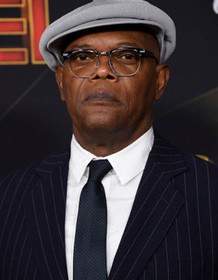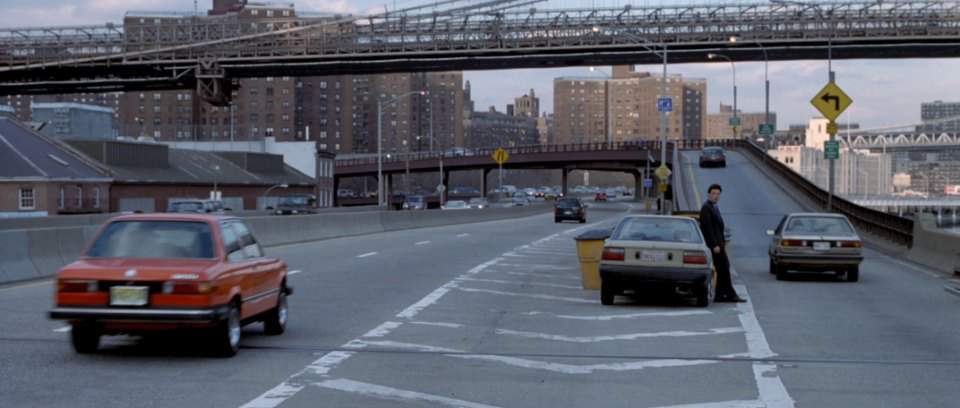Changing Lanes 2002

A collision on a busy highway unexpectedly binds a successful, driven lawyer and a man working in construction. What begins as a minor fender-bender escalates into a bitter feud as both men seek retribution, leading them down a dangerous path. Their escalating conflict threatens to unravel their lives and force them to confront their own flaws in a compelling story of revenge and the possibility of redemption.
Does Changing Lanes have end credit scenes?
No!
Changing Lanes does not have end credit scenes. You can leave when the credits roll.
Meet the Full Cast and Actors of Changing Lanes
Explore the complete cast of Changing Lanes, including both lead and supporting actors. Learn who plays each character, discover their past roles and achievements, and find out what makes this ensemble cast stand out in the world of film and television.
External Links and Streaming Options
Discover where to watch Changing Lanes online, including streaming platforms, rental options, and official sources. Compare reviews, ratings, and in-depth movie information across sites like IMDb, TMDb, Wikipedia or Rotten Tomatoes.
Ratings and Reviews for Changing Lanes
See how Changing Lanes is rated across major platforms like IMDb, Metacritic, and TMDb. Compare audience scores and critic reviews to understand where Changing Lanes stands among top-rated movies in its genre.

69
Metascore
6.4
User Score

6.5 /10
IMDb Rating

63
%
User Score
Take the Ultimate Changing Lanes Movie Quiz
Challenge your knowledge of Changing Lanes with this fun and interactive movie quiz. Test yourself on key plot points, iconic characters, hidden details, and memorable moments to see how well you really know the film.
Changing Lanes Quiz: Test your knowledge on the 2002 film 'Changing Lanes' and its intricate storylines.
What is Gavin Banek's profession?
insurance salesman
high-powered attorney
bank manager
construction worker
Show hint
Full Plot Summary and Ending Explained for Changing Lanes
Read the complete plot summary of Changing Lanes, including all major events, twists, and the full ending explained in detail. Explore key characters, themes, hidden meanings, and everything you need to understand the story from beginning to end.
A driven New York attorney, Gavin Banek, is racing against time to file a significant power of appointment document, which will substantiate that a wealthy deceased individual, Simon Dunn, entrusted his foundation to Banek’s law firm. However, the deceased’s daughter, Mina Dunn, stands in Banek’s way, insisting she should manage the estate herself. Under immense pressure to secure the account for his firm, Banek’s determination leads him to a fateful encounter.
In a rush, Banek collides with another vehicle driven by Doyle Gipson, an insurance salesman who is also hurrying to a custody hearing, desperate to keep his children from being taken away by his estranged wife to Oregon. Instead of addressing the situation responsibly, Banek offers Gipson a blank check to smooth things over, only to be met with Gipson’s commitment to “do the right thing” by filing a police report and proceeding with an insurance claim. Consequently, Banek callously brushes him off with a dismissive, “Better luck next time.”
Unfortunately for Banek, amidst his chaotic day, he loses the crucial power of appointment documentation at the scene of the accident. Now, he faces a daunting deadline set by the judge to retrieve the missing papers. Meanwhile, Gipson grapples with whether to return the documents, especially after the stress of the day’s events pushes him further into turmoil. With his own life hanging in the balance, Banek resorts to underhanded tactics that jeopardize Gipson’s ability to secure a loan necessary for buying a home where he can stay close to his children.
As the story unfolds, both men exhibit a fierce drive for revenge, blurring the lines between right and wrong in their respective pursuits. Banek starts to suspect that his own partners may have ulterior motives, especially concerning the substantial Dunn foundation worth $107 million. He learns through investigation that his partners have been siphoning off a staggering $1.5 million annually from the foundation.
The tension escalates when Gipson pressures Banek to restore his credit before an impending meeting with a banker, threatening to destroy the power of appointment if his demands aren’t met. Although Banek tries to comply, a bankruptcy filing is uncovered during Gipson’s crucial meeting, resulting in a denial of the loan.
Ultimately, Gavin Banek and Doyle Gipson, though initially at odds, experience a transformative journey. Each reflects on the consequences of their actions, leading to newfound respect for ethics. Gavin makes a desperate effort to help Gipson by co-signing his loan application and admits to the court about the fraudulent power of appointment created by him and his partners when Simon Dunn lacked mental clarity.
In a poignant twist, both men extend apologies to one another, and Gipson ultimately decides to return the cherished file. However, it seems the opportunity for both men to achieve their initial goals may have slipped away. In a powerful moment of redemption, Banek confronts his superiors to demand the return of the $3 million wrongfully withdrawn from the Dunn foundation and vows to represent Gipson pro bono. The film concludes on a hopeful note, showing Banek visiting Gipson’s family to explain the situation, while Gipson’s wife and children smile at him from across the street, hinting at a potential reconciliation and a fresh start for all involved.
Uncover the Details: Timeline, Characters, Themes, and Beyond!

Coming soon on iOS and Android
The Plot Explained Mobile App
From blockbusters to hidden gems — dive into movie stories anytime, anywhere. Save your favorites, discover plots faster, and never miss a twist again.
Sign up to be the first to know when we launch. Your email stays private — always.
Watch Trailers, Clips & Behind-the-Scenes for Changing Lanes
Watch official trailers, exclusive clips, cast interviews, and behind-the-scenes footage from Changing Lanes. Dive deeper into the making of the film, its standout moments, and key production insights.
Cars Featured in Changing Lanes
Explore all cars featured in Changing Lanes, including their makes, models, scenes they appear in, and their significance to the plot. A must-read for car enthusiasts and movie buffs alike.
Changing Lanes Themes and Keywords
Discover the central themes, ideas, and keywords that define the movie’s story, tone, and message. Analyze the film’s deeper meanings, genre influences, and recurring concepts.
Changing Lanes Other Names and Titles
Explore the various alternative titles, translations, and other names used for Changing Lanes across different regions and languages. Understand how the film is marketed and recognized worldwide.
Similar Movies To Changing Lanes You Should Know About
Browse a curated list of movies similar in genre, tone, characters, or story structure. Discover new titles like the one you're watching, perfect for fans of related plots, vibes, or cinematic styles.
Quick Links: Summary, Cast, Ratings, More

What's After the Movie?
Not sure whether to stay after the credits? Find out!
Explore Our Movie Platform
New Movie Releases (2025)
Famous Movie Actors
Top Film Production Studios
Movie Plot Summaries & Endings
Major Movie Awards & Winners
Best Concert Films & Music Documentaries
Movie Collections and Curated Lists
© 2025 What's After the Movie. All rights reserved.











































